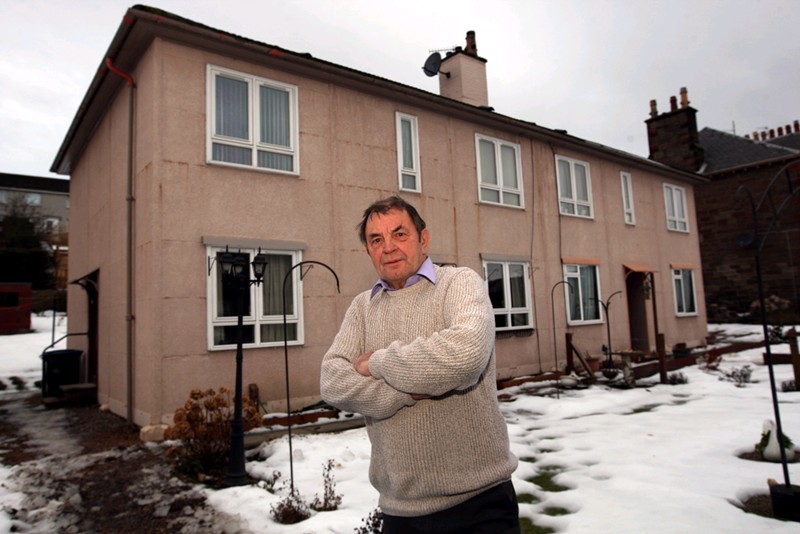The tenants of a distinctive group of Perth houses fear their much-loved homes are in danger of falling apart around them.
Built in the 1920s, the Gray Street prefabs were made out of first world war army tank plate, resting on a concrete plinth.
They were given a 10 to 15-year life span, but they remain in service as council houses and private homes and are hugely popular with residents, despite their quirks.
However, it appears some are beginning to act their age, with bad weather during the last two winters highlighting a number of flaws.
Problems with insulation and frozen pipes will be common to many Perth and Kinross residents. Only the very unluckiest would face seeing their home separate from its foundations — but that is the problem troubling 53-year-old George McFarlane. His father, then aged five, was among the first occupants of his prefab home.
The plate walls of his home have split from their concrete plinth, allowing an icy wind to whistle through the home he shares with wife Phyllis and sending temperatures in the house plunging. He has no intention of leaving the home and prized garden but after 14 plumbing call-outs in the past month, burst pipes, flooding and the house left without water and toilet facilities for days at a time, he believes urgent action needs to be taken.
“This all started in 2009 when we began to have repeated problems with burst pipes and I just couldn’t work out why the house was getting so cold,” Mr McFarlane said. “After some investigating it finally clicked that wind was just whistling through the wall at the back of the house. In fact, you can put you hand into the gap that has grown between the walls and the concrete plinth the house sits on.
“We must have spent hundreds of pounds already this winter trying in vain to keep the house warm. I know that this has been a particularly cold spell, but when you take a close look at it, the house is simply falling apart.”
In recent years Mr McFarlane and his neighbours have had a visit from a blacksmith, who put metal over the join between plinth and walls, but Mr McFarlane believes this only masked the problem. Numerous visits have been made by Perth and Kinross Council staff over the past two years, but Mr McFarlane now believes the only option is for the local authority to consider installing a brick skin around the house and commit to new insulation.
“I feel as though I’ve been running around in circles because none of the work done has come even close to addressing the problem,” Mr McFarlane added. “I believe that putting a brick skin on the building may be the only thing the council can do. That could give these houses another 50 years of life.
“Over the past couple of years I’ve felt as though the council has thought I’ve just been angling for a new house, but I’m quite happy here. I like the house and I like my garden and I don’t want to move.”
Mr McFarlane contacted The Courier in the hope that the move would help persuade the council to take real action at last to remedy the problem. He was offered temporary accommodation almost immediately, but chose to remain in the family home over Christmas and said neighbours had feared being made the same offer.
He is now waiting for the council to get in contact again and added, “I was told in December that a structural engineer would be in touch in the New Year, but really I’m none the wiser about what’s going on.”
A spokesman for Perth and Kinross Council said the local authority “did not comment on individual cases.”
However, he went on to add, “We always make arrangements for temporary accommodation to be provided, if required, in cases such as this. It is our clients’ choice to decline or accept the options of accommodation available.
“We will continue to work with Mr McFarlane to help his situation and make sure the issues with his house are addressed.”
